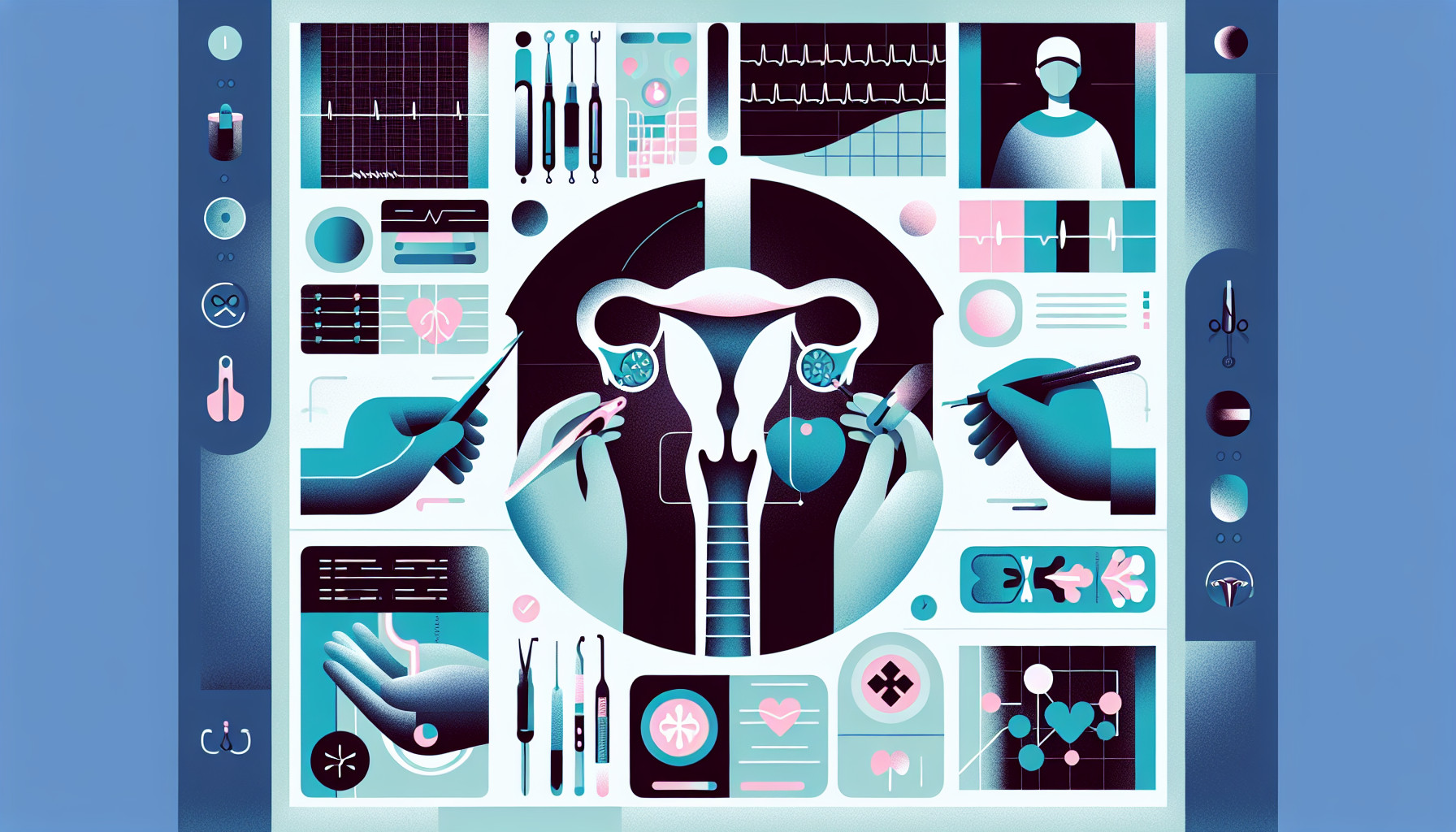Our Summary
This research paper traces the history and evolution of hysterectomy - a surgical operation to remove the uterus. The procedure dates back to ancient times, and has evolved from a vaginal removal for treating uterine prolapse or inversion to a more complex abdominal removal, introduced in 1843. Technological advancements in the 1980s and 2000s brought about minimally invasive techniques such as laparoscopy and robotic-assisted procedures.
Today, a variety of techniques are used to perform hysterectomies, including abdominal, vaginal, laparoscopic, robot-assisted, and a mix of vaginal and laparoscopic. The choice of technique depends on several factors such as why the surgery is needed, the surgeon’s expertise, available resources, the patient’s health, and their preferences.
Abdominal hysterectomy, which involves removing the uterus through a cut in the abdominal wall, has been less preferred as minimally invasive options have become more common. These alternatives usually lead to less pain after surgery, faster recovery, better short-term quality of life, shorter hospital stays, and lower costs. Also, there are now other options for treating conditions that used to necessitate a hysterectomy, leading to a decline in the procedure’s use. However, it is still the best treatment option for many patients.
Large uterine size is often a reason for choosing abdominal hysterectomy, as it is believed that a bigger uterus may present greater risks like blood loss, injury to nearby organs, and longer operating times. There is no consensus on the maximum uterine size or weight for a patient to qualify for an abdominal hysterectomy. Some studies have shown that minimally invasive techniques can safely remove larger uteri. Nonetheless, abdominal hysterectomy is commonly used, particularly for conditions like uterine fibroids, abnormal uterine bleeding, prolapse, and endometriosis.
FAQs
- What has been the evolution of the hysterectomy procedure over time?
- What factors influence the choice of technique for performing a hysterectomy?
- Why is an abdominal hysterectomy often chosen for patients with large uterine size?
Doctor’s Tip
A doctor might tell a patient considering endometrial ablation that it is a minimally invasive procedure that can help reduce or eliminate heavy menstrual bleeding. It is typically recommended for women who have completed childbearing and do not wish to have any more children. Endometrial ablation is not a form of contraception and does not prevent pregnancy, so it is important to use birth control after the procedure. Additionally, it is important to follow up with your doctor regularly to monitor your symptoms and ensure the procedure was successful.
Suitable For
Endometrial ablation is a procedure that is typically recommended for patients who suffer from heavy menstrual bleeding that has not responded to other treatments such as medication or hormonal therapy. It is often considered for patients who have completed their childbearing or do not wish to have children in the future. However, it may not be suitable for patients with certain conditions such as uterine cancer, uterine abnormalities, or active pelvic infections. Patients with a history of pregnancy complications, such as previous cesarean sections or uterine scarring, may also not be good candidates for endometrial ablation.
Overall, patients who are recommended for endometrial ablation are those who have heavy menstrual bleeding and have not responded to other treatment options, are not planning on having children in the future, and do not have contraindications to the procedure. It is important for patients to discuss their medical history and treatment options with their healthcare provider to determine if endometrial ablation is the best option for them.
Timeline
Before endometrial ablation, a patient may experience symptoms such as heavy or prolonged menstrual bleeding, pelvic pain, cramping, and fatigue. They may have already tried other treatments like medication or hormone therapy without success.
After endometrial ablation, the patient can expect a significant reduction in menstrual bleeding, and in some cases, the cessation of periods altogether. They may experience some mild cramping, bloating, or discharge in the days following the procedure. Recovery time is usually quick, with most patients able to resume normal activities within a few days to a week.
Over time, the patient may notice improvements in their quality of life, with less pain, fatigue, and disruption from heavy periods. However, it is important to note that endometrial ablation is not a permanent solution and does not prevent pregnancy, so patients should continue to use contraception if they do not wish to conceive. In some cases, the procedure may need to be repeated if symptoms return.
What to Ask Your Doctor
Some questions a patient should ask their doctor about endometrial ablation include:
- What is endometrial ablation and how does it work?
- What are the potential risks and complications associated with endometrial ablation?
- Is endometrial ablation the best treatment option for my specific condition?
- What are the success rates of endometrial ablation in treating abnormal uterine bleeding or other conditions?
- What are the expected outcomes and recovery time after undergoing endometrial ablation?
- Are there any potential long-term effects or limitations to consider after having endometrial ablation?
- What alternative treatment options are available for my condition, and how do they compare to endometrial ablation?
- How many endometrial ablation procedures have you performed, and what is your experience with this technique?
- Will I still be able to have children after undergoing endometrial ablation?
- Are there any specific lifestyle changes or precautions I should take before or after having endometrial ablation?
Reference
Authors: Carugno J, Fatehi M. Journal: 2023 Jul 18. In: StatPearls [Internet]. Treasure Island (FL): StatPearls Publishing; 2025 Jan–. PMID: 33232036
